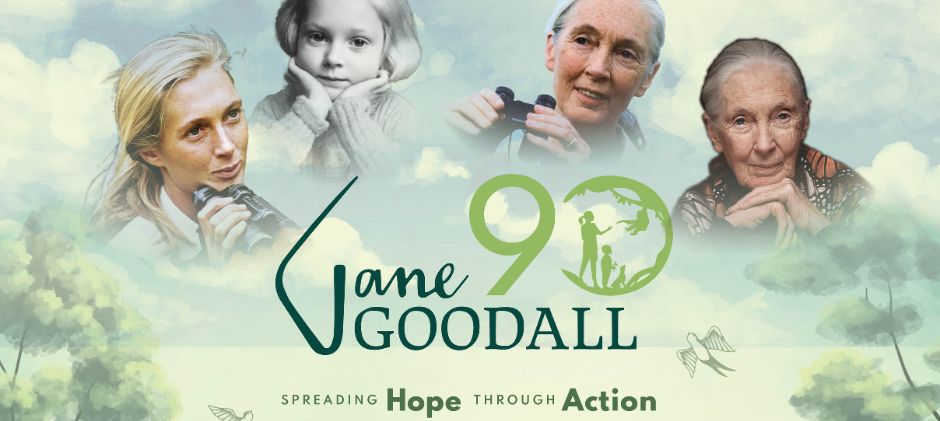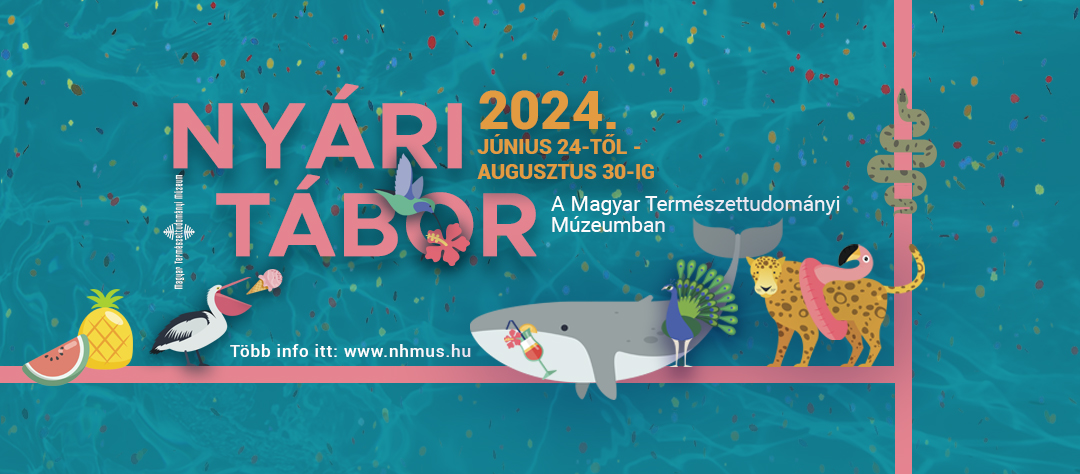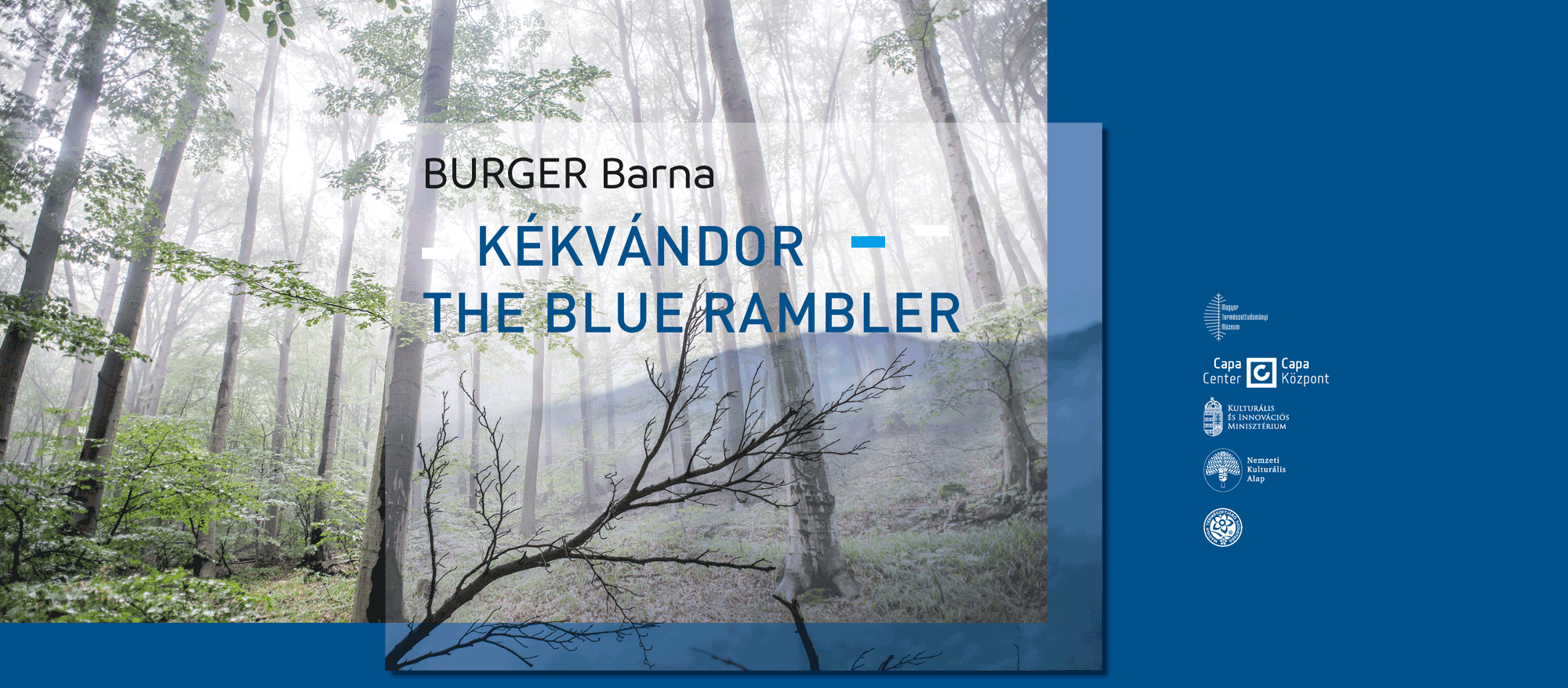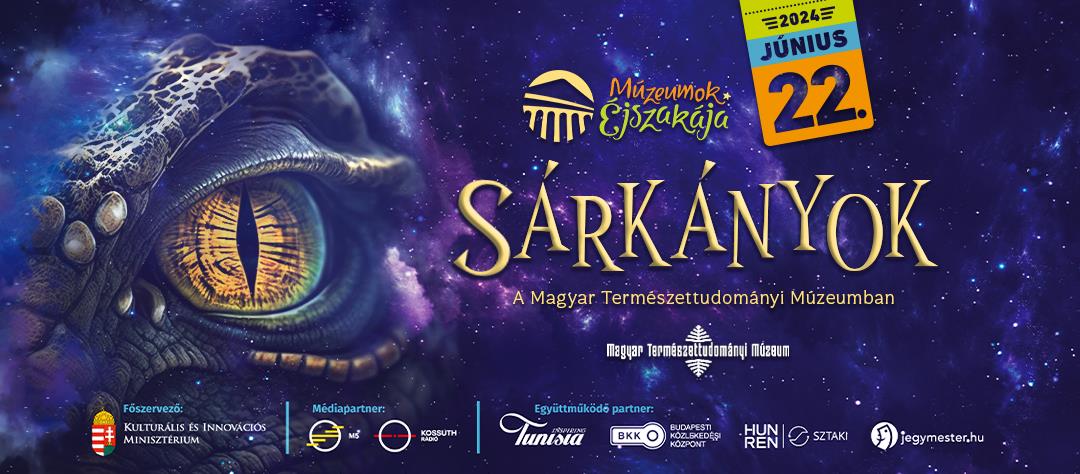Paloma Lopez Guerrero is a freelance palaeontologist at the Complutense University of Madrid. Her main interest is the examination of several families of rodents from the Tertiary supported with cladistic analyses and morphometric database. Since the Hungarian Natural History Museum holds essential material of that age, Paloma applied for the Synthesys fund to be able to work in our institute.
In this interview, Paloma talks about her projects and also gives clear explanations on the methods that the palaeontologists specialised in small mammals work with.
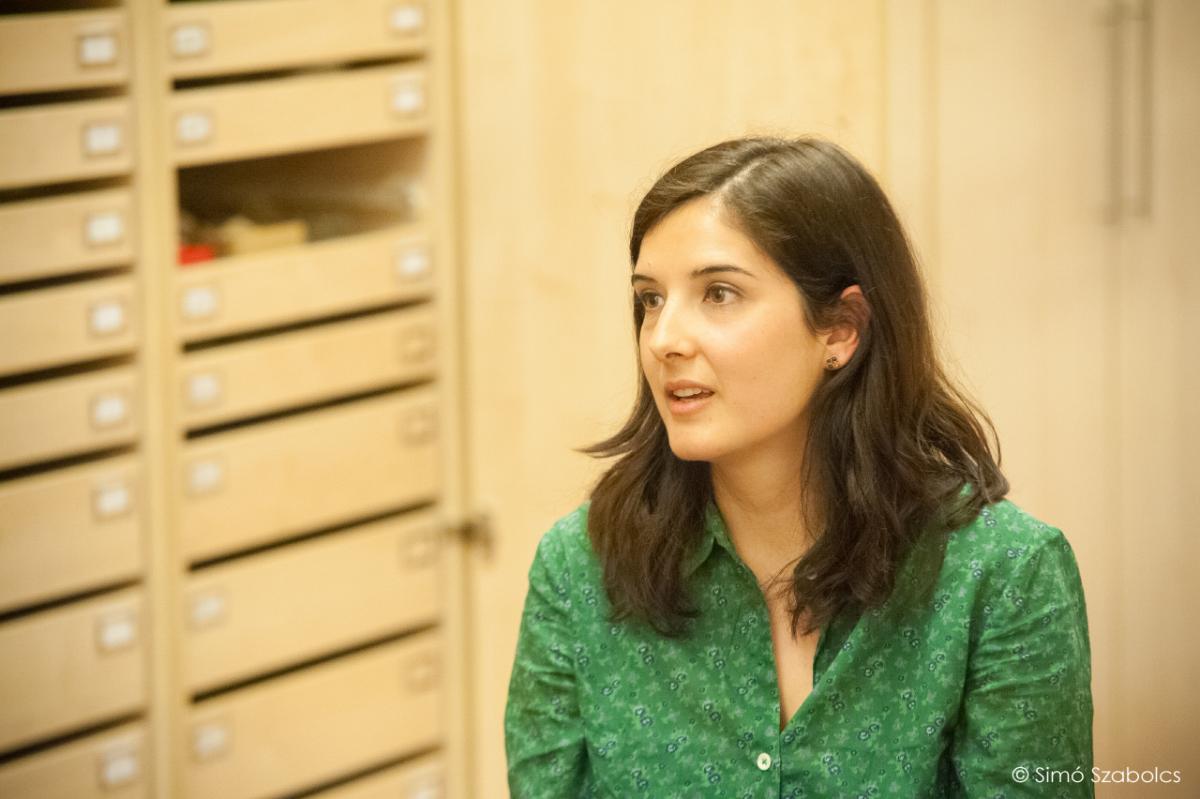
Could you introduce your work in general, please?
My main field is closely related and goes back to my PhD thesis, which was about a group of rodents from the family Cricetidae of the superfamily Muroidea. The Cricetidae includes rodents such as hamsters and voles, while the Muroidea refers to the complex larger taxonomic unit also including mice, rats and other relatives. My topic was about Cricetodontini, a tribe of hamsters of the middle and late Miocene (period about 9 to 12 million years ago). I actually studied the whole Cricetodontini of the periods Aragonian and early Vallesian from the Calatayud-Daroca Basin, both of which are very important in Spain since a lot of environmental changes happened during that time. After my PhD, I spent a year in Vienna working on a postdoctoral project in the Natural History Museum. It was quite different because I had the opportunity there to study the older Oligocene fauna of Mongolia. The material was collected by Dr. Gudrun Daxner-Höck, who had actually been running a long-term project about this topic for about 20 years.
Did it also mean you had to go on collecting trips to Mongolia?
It meant I had to visit Mongolia but I did not excavate fossils there. The material had already been collected by a big team that consisted of partly Mongolian and Austrian scientific staff. My job was to visit the localities, making a sort of tour to collect the GPS data. I can say I was very lucky to have a chance for that 15-day long expedition to see all the localities and meet my Mongolian colleagues including the curator of the Mongolian collection.
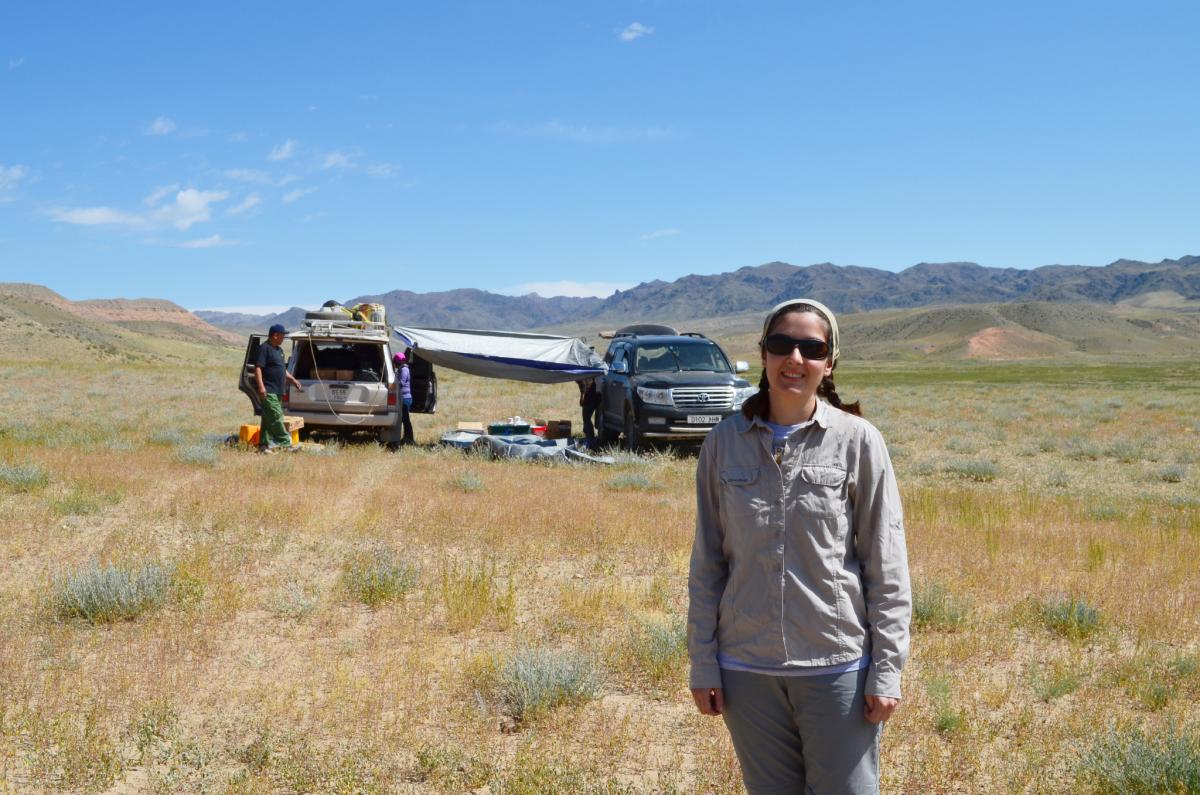
Mongolian expedition (photo by Paloma Lopez Guerrero)
What was your most significant result in this research?
Actually, the results have already been released in several publications. My colleagues and I published a monographic volume about Mongolian faunas earlier this year and I also published a new species, named Argyromys cicigei that I found in the Valley of the Lakes (Mongolia).The reason this species is so interesting is that it belongs to a genus which was previously found only in Kazakhstan and China, but not in Mongolia. It could be a conclusion, that Kazakhstan, China and Mongolia were parts of a big bioprovince. According to it, they may have shared a lot of fauna and were more similar than we previously thought.
Is it common to find new species in your field?
Well, it was not the first time I had found a new species. When I was doing my PhD, I found another one named Cricetodon nievei. So if we are talking about material that has not been studied yet, we can say it is quite common to find new species.
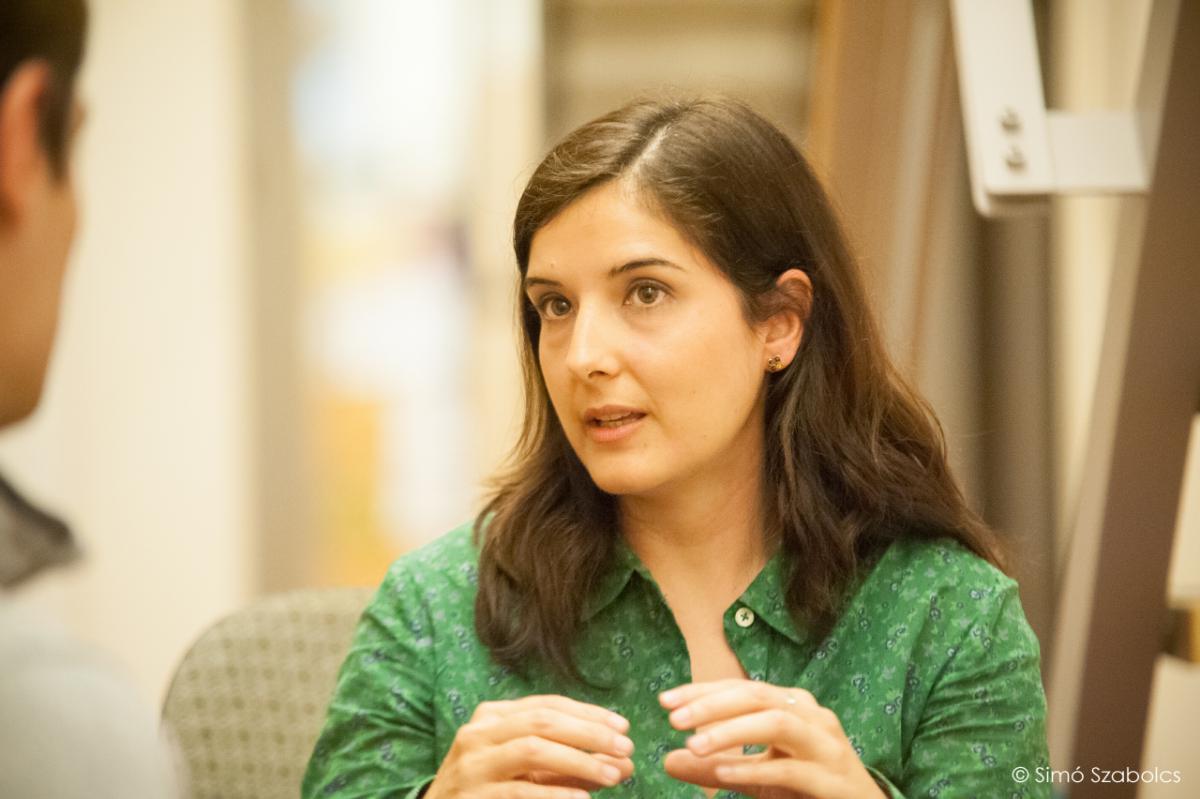
What is your Synthesys project about?
My Synthesys project is closely related to this new Mongolian species because Argyromys cicigei has a combination of characters that can be attributed to different families. The systematics of rodents works the same way as in the rest of the other groups; they have families and tribes, and genera and the species. Imagine it like drawers becoming smaller and smaller.
This species was included in different families because the morphology was very controversial. After my studies, I performed a morphologic analysis, which helped it become clear that this species belongs most likely to the family Cricetidae. However, in my analysis, I could not very well introduce the other family named Spalacidae (moles-related animals). The Hungarian Natural History Museum holds a nice collection of Spalacidae so I can also study the younger members of this family here.
As far as I know, you also do paleoclimatic and geochemistry examinations and measurements. What is the purpose of these methods?
The paleoclimatic methods are based on the fact that the micromammal faunas are very good indicators of the environmental conditions and changes. Today, many more small mammals live in nature than bigger ones, and they evolve very quickly due to their fast metabolism. So every tiny change in the environment can be reflected by their faunas.
For instance, you have a beaver here, which is a very good indicator because it is always attached to watercourses. In the Miocene, just like now, they needed water to survive and they also made dams. So if you find the remains of a beaver, you will know for sure that a river or some stable courses of water had to be present in that environment. Similarly, many other small mammals are strongly attached to their environment. In other words, if you find a certain type of micromammal, you can determine what kind of conditions the locality used to have: a savannah, a steppe or a tropic forest, etc. This is the way the climatic studies help us.
Geochemistry or isotopic analysis is trickier, and I have not directly worked with this method. Yet, I can explain how it works as some of my colleagues, who I collaborate with, use it. It is based on the carbon dating method by taking a sample from the teeth. To make it more comprehensible, let me represent an example with the oxygen. There are two isotopes in the oxygen: the O16 and the O18. One is heavy while the other is light and the heavy one goes more preferentially into the solid material of the water, in other words, into the ice. The ice is, therefore, full of heavy isotopes. If the temperature of the planet allows ice sheets, the heavy isotope O18 will be stuck into the ice. Thus, the running water is full of O16 isotopes, which means that the animals drinking this water are also full of this isotope, too. This is strictly related to the temperature mathematically. Knowing how much O16 or O18 isotopes the animal has, they can exactly tell the average temperature on the surface.
For example, according to geochemichal analyses, the average temperature of the Iberian Peninsula at the beginning of the middle Miocene (16 million years ago) was 12 degrees more than today. It means that it was a tropical or savannah area back then.
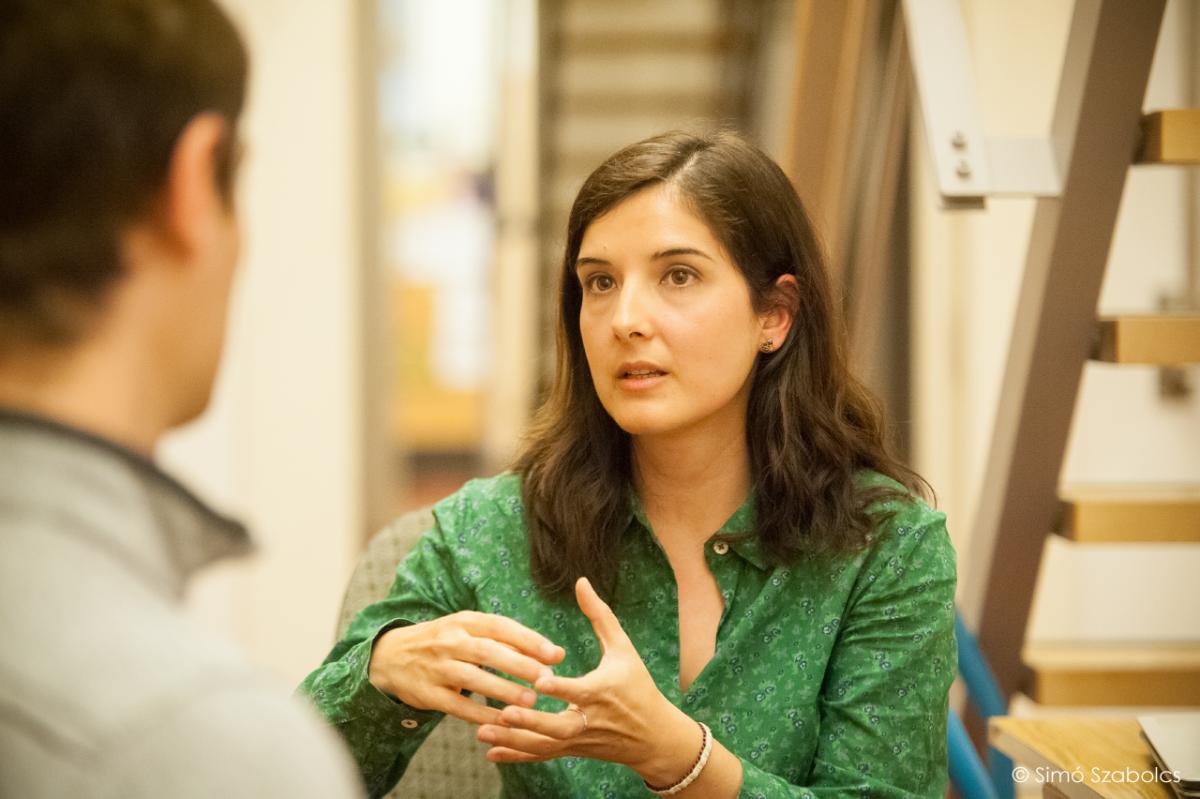
Do you also study stratigraphy or sediments?
Yes, I do. The methodology to study small mammals is strongly related to the stratigraphy. The techniques that we use to extract, or to collect the fossils, are not the same as in the case of big mammals. When they find an elephant, they settle down a net. The process actually is very well represented here in an exhibition of your museum. It displays how to dig or excavate large mammal localities. However, we do not do this. We go through a stratigraphical section and collect material level by level. After that, we put it in a sieve and wash it with high pressure water. In this way, we can rid the teeth of the sediment. If we find any remains in the material, we go back to the locality and collect all the levels. In this case, the weight of the samples is usually more than ten kilos.
Do you have any idea about the evolution of these animals, for example the changes in their teeth and size?
They were more or less the same as today; they haven not changed a lot. They used to be more diverse. In the Miocene, there were more genera of hamsters than now. They were actually substituted by the Muridae, namely the mice and rats. So we can say that the Oligocene and the Miocene was the age of the hamsters and today is the age of the rats and mice.

What could the reason be for this change?
Well, I do not really know for sure but generally they are smaller. Since the dental morphology is very different, they may have had better adaptations to the change of the conditions. Now it is dryer and colder than in the past, and the way they chew, the adaptation that they have on the jaws and maxillas, provides them a good tool to be able to survive in dryer environment.
Which are the most common micromammal fossils?
In my research material, here are a lot of young cricetids and spalacids. They are quite common nowadays.
This is a mandible of Spalacidae, which is like a mole. It is quite rare that you find the whole mandible because we usually have only the teeth isolated. These animals have only three molars like we, humans have, if we include our wisdom teeth, except that they do not have any premolars or canines only incisors.
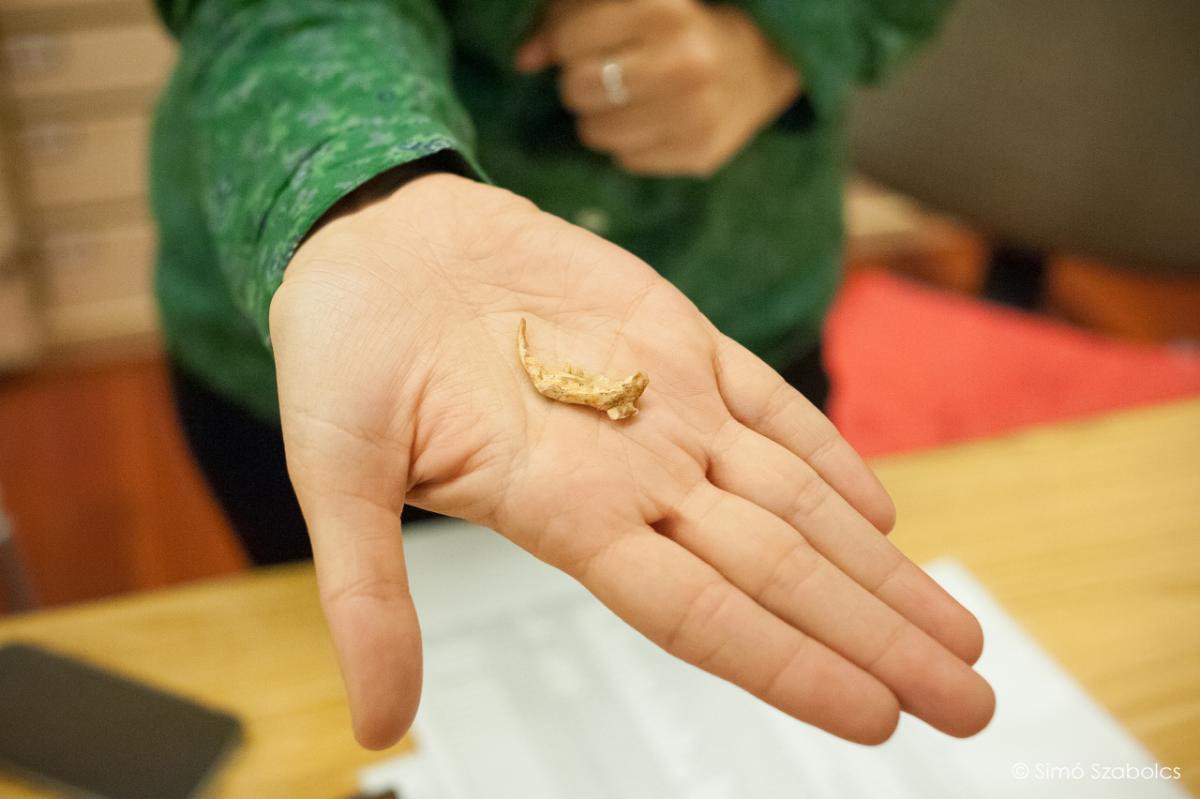
Mandible of a spalacid Anomalospalax tardosi

Part of a cranium of a Cricetus (Hamster)
Do you usually find other bones of these animals?
There are a lot of remains we call postcranial: the hands, (extermids) and limb bones for instance, but we usually do not study this, because the systematics is based on the teeth. If we find a bone, we cannot determine if it belongs to a hamster, a rabbit or a mice since the fossils are accumulated by other animals. Usually, these rodents are preys of such predators like owls. These birds spit out the parts of the bones they cannot digest so the different part of bones of different animals accumulate. This is also one of the reasons we almost never find an entire specimen.

Mandible of Prospalax priscus (photo by Paloma Lopez Guerrero)
What do you like the most in your job?
This job is fascinating but also very hard. You have to work extra time in late hours and sometimes it is not so grateful. For me, the most interesting part is to travel around and meet a lot of people, and to have the opportunity to visit different countries. It compensates for everything. It is also very good to work on your own, but in cooperation with a lot of people to be able to share knowledge, material and techniques. Actually, I cannot do everything alone, as some parts of my working process depend on the work of other researchers. However, I can conduct my job on my own, so it means I do not have a boss. All of us are co-workers and kind of equal with each other.
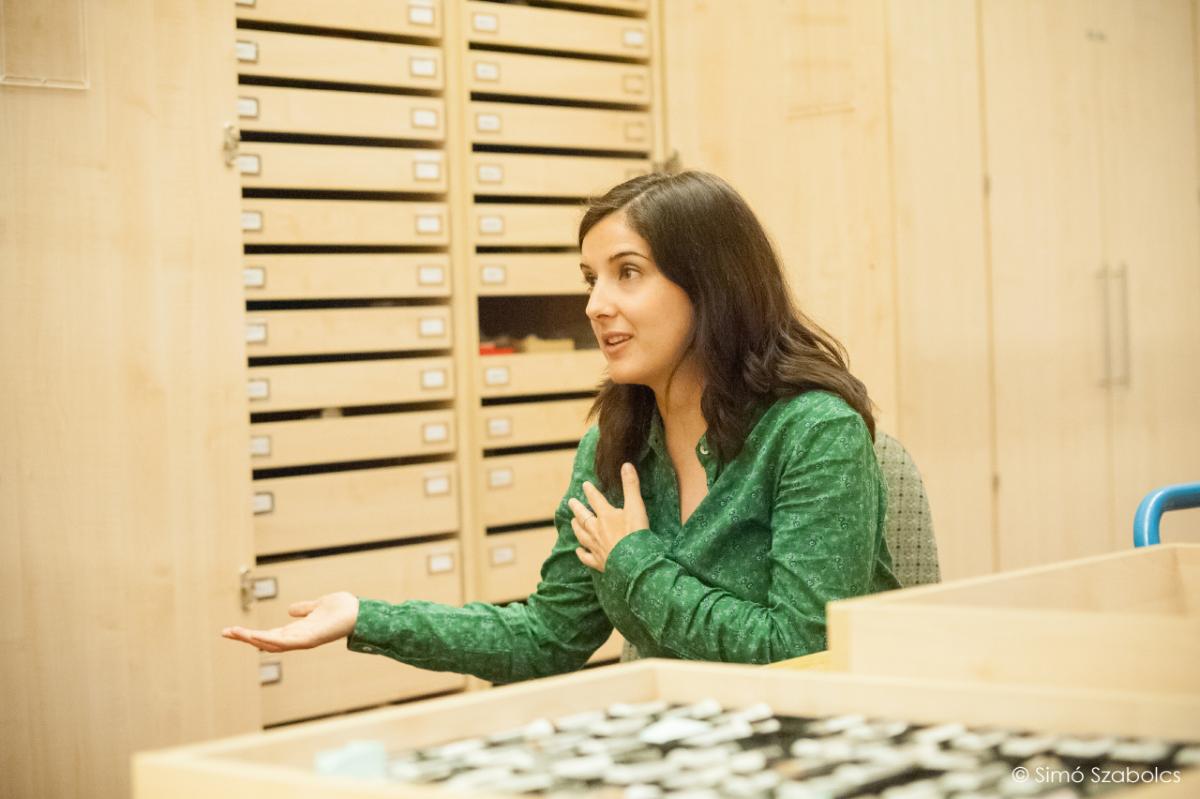
Do you like being here in Hungary and Budapest?
First I came here six years ago for a holiday weekend. Then it was freezing, about -17 degrees so I could not enjoy the city too much. I live in Madrid so I am not really used to that temperature. Now I came five days earlier to see the area of Lake Balaton and especially the geopark which is on the list of the Unesco. There were a lot of former volcanoes, and the lake itself is wonderful. I am discovering now the small parts of Hungary. I lived in Vienna which is monumental and so similar to Budapest. Both cities have the same architecture style, but they had different history which you can see walking around the streets. I also had the opportunity to know a bit the Hungarian lifestyle and I have met very nice people here. I am impressed by the warm character of the colleagues here, not what you would expect from the cold temperatures!
Written by: Krisztián Kucska, Bernadett Döme
Photos by: Szabolcs Simó
